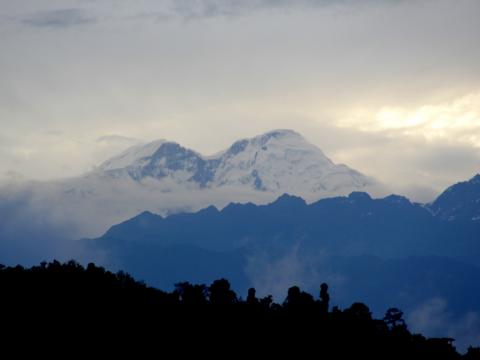10 photos & A love letter to Nepal

I’d planned to visit Nepal as a backpacker for ages. The majestic snowy peaks of the Himalayas, the country’s cultural diversity and the festivals seemed to call me. But when the earth powerfully shook Nepal three months ago, those plans were shaken too.
I never expected that I would reach the country for a different reason.
But in June, I was deployed to support our ongoing relief response as part of the communications team.
Upon my arrival in Kathmandu, the evidence of destruction was very raw — buildings made from bricks collapsed. Random tents were set up in open spaces. Historical sites in Kathmandu and Bhaktapur were being torn down.
My trips to the field here have been unlike those in my home in the Philippines.
Here in Nepal, it’s been a huge challenge to reach the villages.
On average it takes 6 hours to reach one district. Since Nepal is surrounded with giant hills, you have no choice but to pass through the narrow and rough roads. It’s scary but there’s no other way to go.
In districts like Sindhuli, you climb steep mountains and cross rivers to reach the villages.
As you trek, local guides remind you to be cautious of leopards, snakes, or tigers — they can attack anytime. Residents and children fear this too, especially now that they live in tents.
What’s worse is that monsoon season has arrived.
The tremors scarred the entire region with landslides. The landslides took out roads and exposed the mountains’ fresh earth. Communities that were once hard to reach are now nearly impossible to access. The fresh earth means mountain villages are more vulnerable to landslides.
Most of the time, as I wander around, I feel torn between the destruction and beauty of the place.
Nepal, with its 28 million people, remains majestic and beautiful even after the devastation.
At distribution sites, families use donkeys or mules or walk many kilometers with their doko (wooden basket) to return to their homes carrying our relief supplies.
They come with their colorful dresses, bangles, and traditional caps.
Rural communities normally dwell on the edge of the hills— and it’s unbelievable that these people managed to survive. For me, it’s a daily miracle.
World Vision’s response team is doing its best to keep children and families safe from harm. We aim to help families recover in the aftermath of the earthquake.
We’ve been working in this country for more than 15 years expanding access to water and sanitation, improving livelihoods, giving opportunities to women welfare’s and ensuring children’s protection and participation.
I’m grateful that we have close ties with the government, local partner organisations and the communities themselves.
After three months, we’ve been able to reach more than 132,000 survivors with relief items.
We’ve provided things like blankets, temporary shelter materials, water, sanitation and hygiene materials and food.
Thirty-one child-friendly spaces were set-up and attended by more than 4,000 children – helping them recover from the emotional impact of living through the earthquake.
There’s so much that’s been done but there’s more work to do in coming months.
Despite the challenges, we continue to be grateful for the outpouring of support from donors who enable us to give survivors what they need to survive.
Nepal is already one of the poorest countries in the world but people still manage to project positive disposition in life despite the brunt of the disaster.
I’m happy to see children pitching in back to school and try to regain their sense of normalcy.
Many times, there’s language barriers but the eyes of the survivors could speak a lot about their strength and resiliency.
In my field visits, I witness kindness, warmth, and hospitality. Everybody greet me warmly, “Namaste”.
The Nepalis have made me feel that I’m not different. People that I interacted with treat me like a family.
Some communities give me flower garlands when they learn I’m a visitor.
I’ve been into so many adventures in my life but seems like Nepal has outdone all them.
Before I go, I hope to learn more about the survivor’s joys, their untold secrets and their aspirations. I’m thankful to hear how survivors built resilience to cope with the challenges they’ve faced.
I hope I’ve touched their lives. I hope I made a difference. The people of Nepal have certainly touched mine.